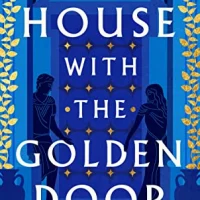YA Weekend: Alien Child by Pamela Sargent
 Genre: Science Fiction, Young Adult
Genre: Science Fiction, Young Adult
Series: Standalone
Publisher: Open Road Integrated Media (May 19th, 2015; originally published January 1, 1988)
Author Information: Website
Tiara’s Rating: 3 of 5 stars
Goodreads | Amazon | Barnes & Noble
Full Disclosure: A review copy of this book was provided to me by Open Road Integrated Media. I would like to thank the publisher for providing me this opportunity. All opinions expressed from here forward are my own.
Originally published in 1988, Alien Child is a young adult book that follows a human girl named Nita who is being raised by a catlike creature, Llipel, in the remains of a medical institute. Llipel’s companion, Llare, stays holed away from them in another part of the institute that she’s not allowed to access. Nita begins to believe that she’s the last surviving human on Earth as she learns more about what happened to the rest of humanity and how she, a human girl, came to exist in a world where humans no longer roam. Then, she discovers that Llare is actually raising a human boy of the same age named Sven.
This book seems typical fare for young adult books published during the 80s and 90s. I think if I’d read this as a kid, I probably would’ve liked it more. Reading it as an adult, it was a conceptually interesting read, but not the most compelling read. It felt a bit too juvenile, even for my tastes. This skews toward the younger side of young adult. We meet Nita when she’s young and follow her to her fifteenth year, and this book focuses on the issues that she goes through as she ages from precocious child to puberty. These issues are handled in ways that a child would relate to them and not in a way that could be seen as gross or inappropriate, except for maybe one scene between Nita and Sven.
The science fiction aspect of the story is where things get a little atypical. This book explores themes such as “nature vs. nuture.” It questions how would a human child behave if raised by a being that didn’t have an innate curiosity about things, who believed that all answers come in due time. As a mom of two, I could definitely see a human child being overly curious as Nita was, despite having a guardian who was cautious and patient. Honestly, I didn’t think Sargent addressed this as well as she could have. Nita didn’t really seem that much different from a child who hasn’t been raised in isolation, and she took to many things much better than you’d expect.
Sargent did a better job trying to explain the horrors of humanity to the children and what led to their destruction, questioning whether humans were even a race worth saving once the children had full knowledge of their heritage. It might not explore this as deeply as my adult mind would like, but keeping the age group this is aimed toward in mind, this is a great way to start challenging their ideas, especially what they feel the fate of humanity should be after learning something pivotal later in the story.
Twelve-year-old me probably would’ve lapped this story up, and I think it probably would be great for kids as an introduction to science fiction and perhaps as a starting point for some of those uncomfortable conversations parents eventually have to have with their kids but are not quite sure how to get there. Adult me thought this was an okay story, but can still see why this is considered a classic and brings out nostalgia among old science fiction fans.












